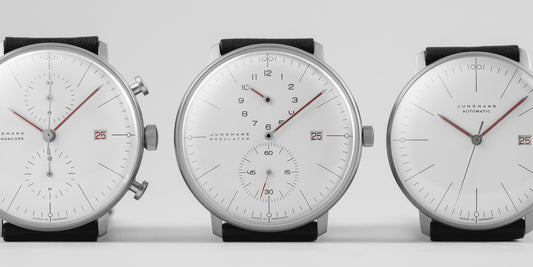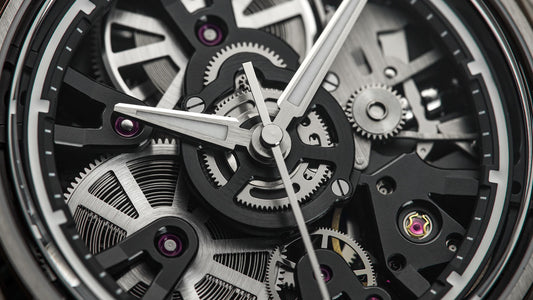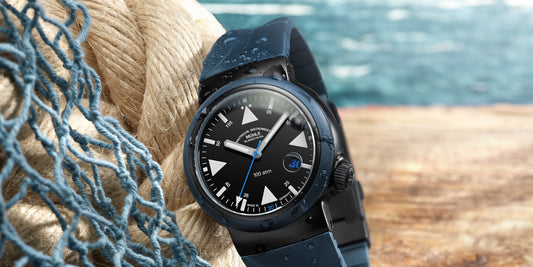Wondering how to spend 24 hours in one of the largest Spanish cities?
The capital, and largest city, in the Catalan region of Spain, Barcelona is a sprawling city full of contrasts and surprises, renowned for its galleries and museums, its architecture, and its world-class cuisine.
But if time is of the essence, and with so much on offer, where should you go and what should you see? Here’s how we spent 24-hours in Barcelona.
El Raval
We’re staying in the city’s El Raval district, about a 9-minute walk from Las Ramblas.It’s a colourful area, home to a large international community, an array of cafés and restaurants, and a bustling nightlife. Our side-street apartment is cool and quirky with a small balcony overlooking bars and graffitied storefronts. The area is currently undergoing redevelopment (an esponjament, or ‘mopping-up’ as the authorities are calling it), shaking off an unsavoury reputation stretching back to the late 70s and 80s. Reminders of its seedier past still lurk- the note from our hosts, tacked to the back of the deadlocked door, warns us to be vigilant and not answer the door to strangers.
With accommodation available throughout the city, El Raval may not be for everyone. But it is a great location from which to set off on a day’s exploring and we encounter no problems whatsoever during our stay.
A city of contrasts
A microcosm of the rest of the city, El Raval contrasts the very old with the very new. Practically on our doorstep are the Biblioteca de Catalunya and the 18th century Church of Sant Agustí Nou…

The Old Town, Barcelona - Image Credit: Gareth Rosser
…and neighbouring these centuries-old buildings, proof of that extensive regeneration: whole areas demolished to make way for trendy squares and new complexes, such as the one that houses the Museu d’Art Contemporani.
Breakfast: 365.café
We wake on our first (and only) full day here a little groggy. Local nightlife in full swing during the night, we step outside the following morning to empty streets, the whole neighbourhood sleeping off a collective hangover.

Time for breakfast in Barcelona - Image Credit: Gareth Rosser
We head for breakfast on the Carrer de l’Hospital, every window packed with pyramids of cakes and croissants. We opt for 365.café. Light and airy, stretching back at a right-angle to the street, it’s part of a chain and a real Barcelona success story- the franchise beginning almost two decades ago with a single bakery. Now it has over 100 cafés dotted around the city.
A cappuccino, a freshly squeezed orange juice and a selection of pastries are all reasonably priced and the place is busying up as we eat- local labourers and trendier, younger types, laptops primed to take advantage of the free Wi-Fi.
Finished up, and fully fuelled for the day ahead, we make our way to stop #1.
Stop #1: Plaça de George Orwell
Eric Arthur Blair visited Barcelona in 1936. Initially intending to report on the Spanish Revolution, reaching its height around that time, he instead joined the communist militia in their fight against General Franco’s nationalists, going on to document the experience (under his more famous pseudonym), in Homage to Catalonia.
Barcelona’s Gothic Quarter is an essential stop-off and is perfect for an aimless wander day or night. This morning though, we have a definite destination in mind, hidden within its labyrinthine streets.

Plaça de George Orwell, Barcelona - Image Credit: Gareth Rosser
I’ve come to Plaça de George Orwell as a fan of the author but in truth, it isn’t the most remarkable square in the city (nor does it have any special significance or relationship to the man himself aside from the plaque bearing his name). There are though, a number of bars and cafés, and an intriguing piece of public art in the form of a Leandre Cristòfol sculpture.
There’s also a prominent sign proclaiming ‘BCN no està en venda’ (‘Barcelona is not for sale’), a reference to a growing movement against, amongst other things, Barcelona’s mass-tourist model, that saw 2000 people take to the streets at the end of 2018 and may help to explain our host’s insistence that we don’t confirm, if asked, that we booked the apartment via Airbnb.

The streets of Barcelona - - Image Credit: Gareth Rosser
After a few quick snaps, it’s back to Las Ramblas. Described by Orwell as ‘the wide central artery of the town’, these days it’s the tourist centre of the city- a packed promenade lined with kiosks, outdoor cafés and elaborately-costumed street performers. It separates El Raval and the Gothic Quarter to the west and east respectively and leads to the Columbus Monument and Port Vell to the south (more on which later). For now, we’re only here to catch the metro.
Getting around
Hop-on Hop-off bus tours are popular and will take you to all of the city’s major tourist attractions. If you’re staying more than a few days they’re a great way to get your bearings before setting out on your own, but at €27 per day, not the most economical. A single trip on the metro, on the other hand, is just €2.20 (a 10-trip ticket is available and is the best value if you’re sure of getting 10 trips in) and the underground system is quick, and easy to navigate, with no Spanish required.
Stop #2: Sagrada Família

The iconic (unfinished) La Sagrada Família - Image Credit: Gareth Rosser
We head to one of the most iconic of Barcelona’s architectural feats.
La Sagrada Família is an unfinished church designed by Antoni Gaudí, and a UNESCO World Heritage site. Towering above nearby trees and crisscrossed with cranes, work on the building is still underway, an expected completion date set for 2026, one hundred years after the death of its chief architect.
The outside comprises three striking grand facades- the Nativity, the Passion and the Glory and the streets surrounding the building are packed. A ticket is required to venture inside, prices ranging from 17 to 32 euros for full access (which includes audio guides and queue-jumping).

The Gaudí architecture of Barcelona - Image Credit: Gareth Rosser
With no pre-booked ticket purchased, and time being of the essence, we decide to satisfy ourselves with the outside view alone and head off in search of lunch.
Note: other must-sees for Gaudí architecture include Casa Batlló and Park Güell. Both are World Heritage sites and the latter (pictured above), is strongly recommended.
Shopping in Barcelona

A look at the other side of Barcelona - Image Credit: Gareth Rosser
Walking through the city, we enter a far more cosmopolitan area. Treelined streets of high-end shops and smaller boutique stores lead us unexpectedly to the bright and fragrant florist that marks the entrance to Mercat de la Concepció.
La Concepció is an indoor, fresh food market in the Dreta de L’Eixample district.

Mercat de la Concepció, Barcelona - Image Credit: Gareth Rosser
One of scores of such markets dotted around the city, the fresh produce is a draw for both locals and tourists, whether looking for fresh fruit and veg, seafood, or just to soak up the variety of flavours and aromas.
Later in the day, we’ll visit another indoor market back in Raval and if you come across one on your travels, popping in is a must.
Lunch: La Central

There are plenty of great little cafés in Barcelona to grab a drink - Image Credit: Gareth Rosser
A short walk from la Concepció is the La Central bookstore at 237, Carrer de Mallorca, a place combining my two great loves- books and beer. Among the teeming bookshelves it has a licensed café and rooftop terrace, and today it is also the venue for a reading by Spanish poet and novelist, Mario Cuenca Sandoval.
Whilst crowds build for the imminent talk, we order lunch and sit back, soaking in the atmosphere of this wonderful little café.
I opt for the veggie (‘non-animalistic’) option and accompany it with a Clara, a ‘beer with lemon’ as I am reliably if sceptically, informed by our server. More than content with notes of citrus in my ale, the Icy Lemon Fanta shandy that duly arrives is surprisingly refreshing.

La Central bookstore - Image Credit: Gareth Rosser
In mid-February it’s a little too cold to make proper use of the garden terrace so we remain warmly inside, trying and failing to interpret the content of the novelist’s question and answer session, before beating a hasty retreat, though not before a quick search of Sandoval amongst the books downstairs confirms that sadly, he has yet to be translated into English.
Stop #3: The Museu Nacional d’Art de Catalunya

The Museu Nacional d’Art de Catalunya - Image Credit: Gareth Rosser
The Museu Nacional d’Art de Catalunya is situated on Monjuïc hill, high above the city and accessed by flights (and flights) of steps, or alternatively by escalators. However you reach the hill’s summit though, the view over the city is spectacular.
The building itself is suitably impressive too. Palau Nacional was built to house the World Fair back in 1929, and became the permanent home of the National Art Museum of Catalonia in 1934. It’s a massive building and it’s worth setting aside a good few hours to saunter through its halls at the calm and reflective pace necessary to take it all in.
There’s an extensive collection of Renaissance and Baroque works as well as a floor dedicated to Modern Art. An early Picasso self-portrait, Canaletto’s Venice: The Basin of San Marco on Ascension Day and works by Rubens and Goya are our highlights.
Plus, a film by Frenchman Georges Méliès, the pioneer of silent cinema and director of Le Voyage dans la Lune (1902). The version on display of his short film Éruption volcanique à la Martinique – based on the real-life eruption of Mount Pelée in 1902 – was both found and restored by the Filmoteca de Catalunya based in central Barcelona.
As another added bonus, on the Saturday afternoon of our visit, gallery entry is free.
Street art in Barcelona

The incredible street art of Barcelona - Image Credit: Gareth Rosser
We head back towards El Raval and there’s just time to take in the graffitied shopfronts and garages we pass along the way.
They’re a real feature of the city wherever you look…

The incredible street art of Barcelona - Image Credit: Gareth Rosser
…except maybe, where we’re heading next. But first, time for another food stop.
Dinner: La Morera
We chance upon innumerable eateries on our travels, offering world cuisine, fresh-caught seafood, local lager and craft beers. But La Morera back in El Raval takes top prize for the tastiest and best value meal of our trip.

La Morera, Barcelona - Image Credit: Gareth Rosser
Barcelona’s tourist areas can get pricey but here we enjoy delicious food and drink at a fraction of the cost closer to Las Ramblas or along the seafront- €2.60 Cava, cheap beer, and a particularly enjoyable brûléed pâté.
Later, we’ll also indulge at Somorrostro on Carrer de Sant Carles, which also comes highly recommended.
Stop #4: Port Vell

Port Vell - Image Credit: Gareth Rosser
At the southern end of Las Ramblas, the city meets the Balearic Sea. Follow the crowds across the Rambla de Mar footbridge to the shopping mall Maremagnum, with its IMAX cinema, aquarium, high-end shops, and an array of restaurants with terrace views across the mast-scape of yachts and the city’s working quay, and you’ll find another huge – and somewhat jarring – contrast.
Prices are higher but it’s worth paying a visit to enjoy tapas and a beer whilst overlooking the busy Port Vell. There are restaurants and bars all along the seafront, as well as funfairs, snack vans, and the Roy Lichtenstein sculpture ‘Head of Barcelona’, created for the 1992 Summer Olympic games.
After sampling some more local ale, we head back to Las Ramblas as night begins to fall.
Stop #5: Las Ramblas and Plaça Reial

Las Ramblas and Plaça Reial - Image Credit: Gareth Rosser
Passing the Columbus Monument and the city’s former customs building, we alight back onto Las Ramblas, Orwell’s words ringing in our ears.
Awash with people by day (tourists, locals, stall holders, pavement café owners), it’s still busy once the sun goes down but the promenade by lamplight feels a lot less hectic, the pace slower, more relaxed.
Minds emptying as we stroll, we find ourselves funnelled into Plaça Reial, an attractive square on the edge of the Gothic Quarter that acts like a net for wandering tourists. The predominant voices coming from its bars and restaurants are English but it’s a lovely spot and a great place to enjoy an Estrella whilst looking back on an action-packed day.
The nightlife won’t start to busy up until after midnight, with nightclubs filling up from 3.00am. We’ll be asleep long before then, the impromptu fireworks of El Raval notwithstanding, reflecting on the sights we’re sure to visit next time.
Stop #6: Camp Nou

The Olympic Stadium, Barcelona - Image Credit: Gareth Rosser
Early next morning, outside of our 24-hour itinerary (call it injury time), there’s one final stop-off to make before heading back to the airport. For a sports fan in Barcelona, top of the to-do list will undoubtedly be a visit (if not a pilgrimage) to Camp Nou, the home of Barcelona FC.
Easily accessible by Metro, or as a stop on the Hop-on Hop-off bus, €35 or so will secure you the full 2-hour tour. And there’s a lot to see.

Camp Nou, Barcelona - Image Credit: Gareth Rosser
From the low-level dugout with its worm’s-eye view of the pitch, to the heights of the press box and its vertiginous drop down onto the action; from trophies and Lionel Messi’s boots, to the steps down and then out onto the pitch, there’s loads of behind-the-scenes action and plenty of highlights.
After last night’s reflections, the post-match interview in the tunnel if you like, today – heading toward the media suite – there’s time for the more studied, considered reflection of the press conference in the media’s full glare.
We’ve had a great time in a truly great city. We’re ending on another (if completely different) iconic venue, and an entirely different feat of engineering, but what a fitting way to approach our trip’s final whistle.






